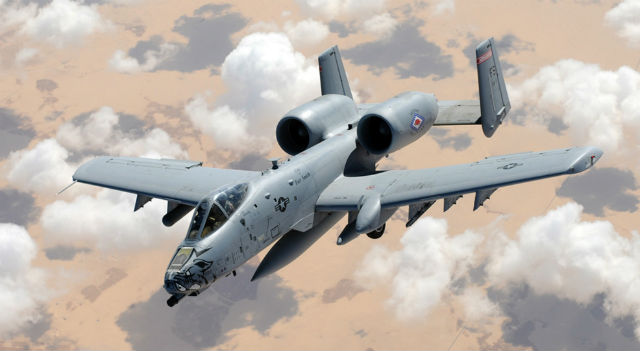The US Air Force will likely have to cut entire fleets of aircraft to comply with the Congressional sequestration law, says a top service official. In order to retain a force capable of operating across the spectrum of operations, the USAF will have to sacrifice single-mission aircraft in order to preserve multirole machines.
“The only way you really save money is to make entire weapons systems go away,” says Gen Mike Hostage, commander of the USAF’s Air Combat Command. That is “so that the whole logistics train, the whole support infrastructure that goes with it goes away.”
Though eliminating single-mission aircraft is the most efficient way to save money while preserving military capability, the problem is politics, Hostage says.
For example, the L-3 MC-12 Project Liberty aircraft has excellent capability, if funding was not an issue, Hostage says. Other single-mission aircraft that might be sacrificed include the Fairchild Republic A-10.
 |
|---|
US Air Force |
However, the Boeing F-15C fleet is likely to be preserved to some degree, even if total fleet numbers drop. The USAF is short on air superiority capability with its small fleet of 184 Lockheed Martin F-22 Raptors, Hostage says. The Lockheed F-35 will be able to fill that role when used in conjunction with the Raptor, he adds, although the F-22 will remain the preeminent air superiority machine for the foreseeable future.
The USAF has to prioritise recapitalisation over modernisation, otherwise the service faces the unsavoury prospect of facing-off against enemy forces with 45-year old fourth-generation fighters in the future. “No matter how you [modernise the capability], it is not tactically viable once you get to the middle of the decade,” Hostage says. The USAF is “screwed” if it does not modernise with the F-35, he adds. But if the worst came to the worst and the F-35 were to be cancelled, the USAF would need 350 new-build Raptors to get to 2030, Hostage says.
The F-35 is expected to be able to operate across a wide spectrum of missions. “In a perfect world, I’d like to have 1,000 A-10s I could do close air support [CAS] with,” Hostage says. “I can’t afford it. I can’t afford the fleet I have now.”
While it will be more expensive to do the CAS mission with the F-35 and perhaps not quite as “impressive” as the A-10 in that role, the stealthy fifth-generation fighter can perform the task, Hostage says.
Even the Boeing B-1 bomber or even the future Long-Range Strike Bomber will be able to perform the CAS role, he says. “I will not lose what we have gained in understanding how to support the army in the tactical battlefield,” Hostage says. “That was the mistake we made coming out of Southeast Asia.”
Source: Flight International



















